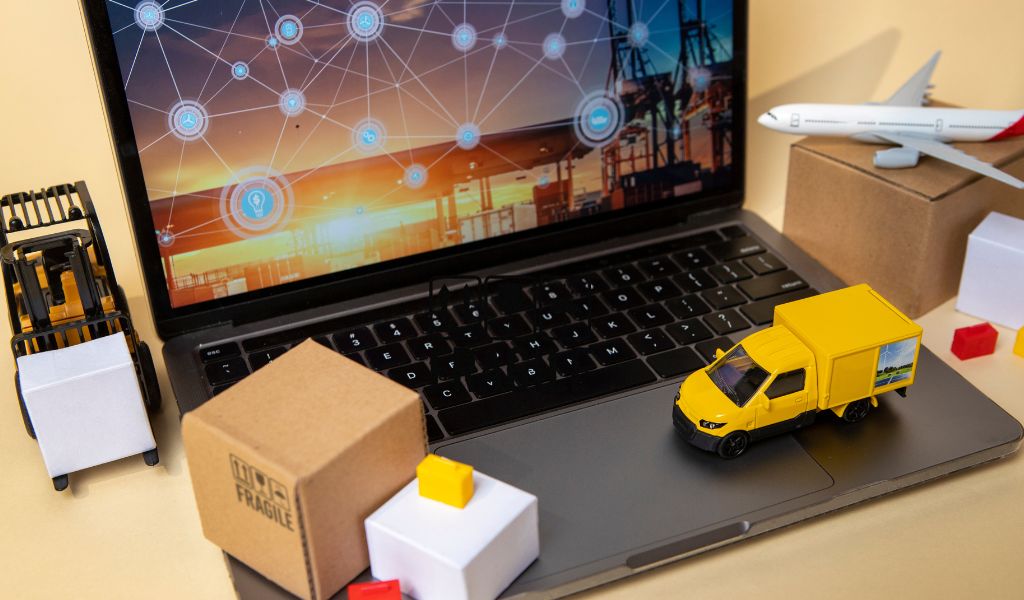Finding the right third-party logistics (3PL) provider can be tough for e-commerce businesses. Many struggle with delayed shipments, high costs, or poor inventory management. These challenges often hurt customer satisfaction and profits.
In 2025, choosing a 3PL will require more attention than ever. With growing online sales, businesses need reliable partners to handle shipping and fulfillment effectively. The right 3PL can enhance delivery speed and keep your operations running without problems.
This guide will help you understand what to look for in a 3PL provider. From technology compatibility to cost transparency, we’ll cover the key features you need to know. Keep reading to find out how the right choice can grow your business!
Define Your E-commerce Fulfillment Needs
Understanding your specific e-commerce fulfillment needs sets the groundwork for choosing the right 3PL provider. Assess order volumes, product types, and shipping destinations to identify precise requirements.
Consider if you need temperature-controlled storage or specialized handling for fragile items. For businesses managing large inventories, prioritize efficient inventory management systems and fast order processing.
Evaluate customer expectations around delivery speed and accuracy. Businesses targeting international markets should account for carrier partnerships that support global logistics.
Seasonal spikes or promotional events may require flexible scalability options from a fulfillment center. Clearly define all these factors to ensure smooth operations within your supply chain management strategy.
Knowing what you need helps avoid unnecessary costs and ensures better performance.
Key Features to Look for in a 3PL Provider
Finding the best 3PL for e-commerce requires careful attention to essential features. Focus on services that align with your business goals and growth plans.
Technology Integration and Compatibility
E-commerce businesses need 3PL providers with strong technology systems. A reliable provider should connect with your existing e-commerce platforms, such as Shopify or WooCommerce. This enables smooth order processing and real-time updates on inventory management and shipping.
Look for 3PLs that offer tools like API integration or cloud-based software. These features enhance supply chain visibility and make operations more straightforward. Advanced tracking systems also allow you to monitor deliveries in real time, ensuring improved customer experience and delivery speed.
Scalability and Flexibility
A reliable 3PL provider customizes its services to suit your changing business needs. Whether you encounter rapid growth, seasonal surges, or varying demand, you must manage adjustments effectively.
Their infrastructure should accommodate growth without delays in order processing or shipping.
Flexible options enable businesses to respond promptly to market trends and customer requirements. This includes adjusting warehouses for additional storage or altering delivery solutions based on volume changes.
Next, assess their capacity to sustain high performance during busy seasons and periods of increased demand.
Performance Metrics and Guarantees
Reliable 3PL providers monitor performance through measurements like order accuracy, delivery speeds, and inventory updates. High accuracy rates reduce errors in shipping and fulfillment, saving time and money.
Quick delivery ensures customer satisfaction while retaining loyalty for your business.
Clear guarantees from a provider ensure responsibility for meeting targets. These agreements safeguard you from problems with delays or incorrect shipments. Always prioritize 3PLs that meet specific performance indicators tied to your supply chain goals.
Their dependability directly affects peak season handling capabilities.
Peak Season and Volume Handling Capabilities
3PL providers must manage surges in orders during peak seasons like holidays or sales events. They should have the ability to expand operations quickly and handle high-order volumes without delays.
Dependable fulfillment services ensure steady shipping and delivery times even when demand increases.
An effective distribution network aids in handling inventory more efficiently during these times. Warehousing systems with advanced logistics options can improve order processing for quicker turnaround.
Seek out 3PLs that maintain collaborations with multiple carriers to offer adaptable shipping choices during busy months.
Transparent Pricing and Cost Structure
Managing fluctuating volumes efficiently is essential, but maintaining predictable costs is equally important. Clear pricing guarantees businesses avoid sudden fees that strain budgets or lead to undue stress.
Simple cost structures help you evaluate services and plan wisely. Seek 3PL providers who clearly detail fees such as storage, shipping, and order processing without concealed charges.
Knowing these costs fosters better decisions and keeps your fulfillment expenses manageable. Clear rates establish trust and offer adaptability as your e-commerce operations expand.
Strong Communication and Reporting Processes
Clear communication improves trust and efficiency in logistics partnerships. A dependable 3PL must offer frequent updates on inventory management, shipping progress, and order processing.
Comprehensive reporting assists businesses in tracking performance indicators like delivery speed and fulfillment accuracy.
Prompt notifications about delays or issues allow for swift decision-making. Committed support teams should respond to inquiries quickly, ensuring clarity throughout the supply chain process.
Effective communication enhances operations by encouraging cooperation between e-commerce businesses and third-party logistics providers.
Evaluate Warehouse Locations and Strategies
Choose warehouse locations near major customer bases. This reduces shipping times and costs, enhancing delivery speed and customer satisfaction. Proximity to carrier services or transportation hubs also ensures more efficient supply chain operations.
Consider multi-warehouse strategies for improved distribution network coverage. Spread inventory across regions to handle orders faster and avoid delays during peak seasons. After assessing location advantages, let’s evaluate the stability and reputation of potential 3PL providers.
Assess Stability and Reputation of the 3PL
Check the financial health of the 3PL provider to ensure long-term stability. Look for established logistics providers with a proven track record in supply chain management and fulfillment services.
A company with decades of experience often signals reliability and expertise in handling ecommerce solutions.
Research their reputation by reading client reviews, industry ratings, or case studies. Strong relationships with carriers and consistent delivery speed reflect trustworthiness in shipping and inventory management operations.
Dependable third-party logistics partners will prioritize customer satisfaction while maintaining efficient warehousing and cost efficiency standards.
Conduct a Trial Run Before Full Commitment
Testing a potential 3PL provider is essential before making a long-term decision. It helps evaluate their capabilities and identify potential issues.
- Start with a small number of orders to examine how the 3PL handles fulfillment services. This shows their accuracy in order processing and shipping methods.
- Monitor delivery speed for your sample orders during the trial period. Delays in shipping can harm customer satisfaction and impact your business growth strategies.
- Check how inventory management is addressed by reviewing updates during the trial process. Efficient systems ensure proper stock tracking and prevent shortages or overstocking.
- Test the logistics provider’s communication throughout the process. Clear and timely reporting influences your ability to provide updates to customers and plan operations effectively.
- Assess how they manage carrier partnerships for different regions or product types. Reliable networks contribute to efficient logistics services across your distribution network.
- Request performance data covering critical areas like error rates, transit times, and fulfillment accuracy during this phase. Consistent results confirm dependability in real-world conditions.
Review feedback carefully from this test phase, then move on to evaluate warehouse locations and strategies for further alignment with your needs.
Conclusion
Choosing the right 3PL can shape your e-commerce success in 2025. Focus on providers that meet your business needs and adapt to growth. Pay attention to their technology, pricing, and service reliability.
Evaluate locations and test their performance before making a final decision. The right partner will improve efficiency, reduce costs, and keep customers satisfied.
Read Also:














